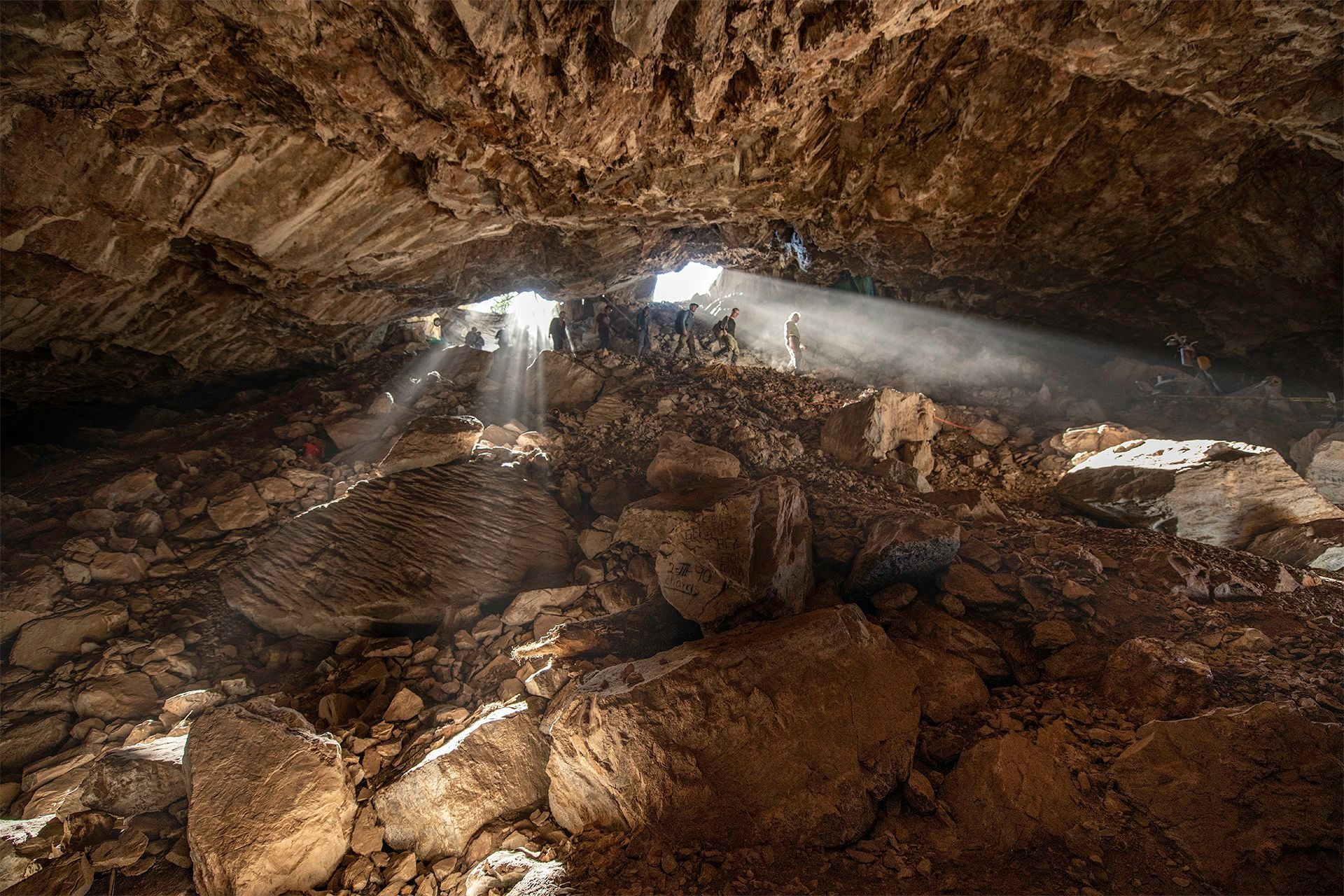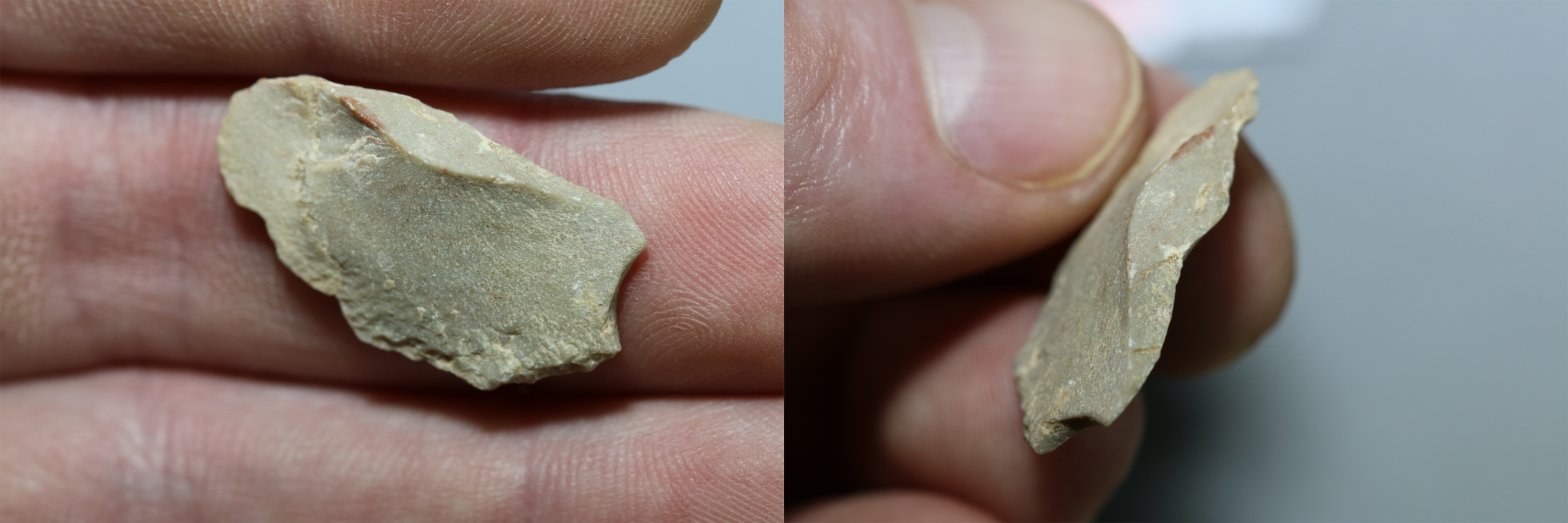Humans Reached North America 10,000 Years Earlier Than We Thought, New Research Suggests
Archaeological discoveries in a Mexican cave suggest humans reached North America some 30,000 years ago, which is a whopping 10,000 to 15,000 years earlier than previous estimates. The new research means it’s all but certain that the first people to reach the continent did so by following a Pacific coastal route.
The first people to reach North America didn’t wait around for the giant ice shelves to melt, reaching the continent at the peak of the last ice age, according to two related studies published yesterday in Nature.
The newly revised time frame, as evidenced by stone tools and flakes found at Chiquihuite Cave in northern Mexico, suggests humans first ventured into North America between 31,000 and 33,000 years ago, instead of the more generally agreed upon window of 15,000 to 20,000 years ago. That’s a significant update to our thinking and a definite rewrite-the-textbooks kind of discovery.
Indeed, the scientific ramifications of these new papers aren’t trivial, as they weigh upon two notable theories: the Clovis-first Hypothesis and the Coastal Migration Hypothesis. If confirmed, the new discovery means the Clovis culture, with their distinctive fluted spear points, were not the first humans to reach North America some 13,000 years ago. It also means the initial route into the continent followed along the Pacific coast and not an interior corridor, given a human presence in these Mexican caves during the Last Glacial Maximum, when continental ice sheets were at their largest.

Team members entering Chiquihuite Cave. (Image: Devlin A. Gandy)
The first paper, led by archaeologist Ciprian Ardelean from Universidad Autónoma de Zacatecas in Mexico, describes stone tools and flakes, the remains of plants, and scraps of non-human animal DNA found in Chiquihuite Cave, a high-altitude site located in the Astillero Mountains. A handful of artefacts found at the same site in 2012 hinted at the extreme age of human occupation, leading to this more extensive investigation.
In total, the archaeologists found 1,930 stone artefacts, the oldest of which were dated to around 27,000 years ago and the youngest to around 13,000 years ago. The artefacts were manufactured from limestone but knapped into a previously unknown lithic style.
“Overall, the assemblage represents a lithic industry with no evident similarities to any of the other cultural complexes of the Pleistocene or Early Holocene epochs known in the Americas,” wrote the authors.
This mode of industry likely required advanced flaking skills to turn the raw material – recrystallised limestone – into tools, according to the researchers. The scientists don’t yet know how or where the greenish limestone was sourced, but a chemical analysis suggests this material didn’t come from inside the cave.
In total, Ardelean and his colleagues obtained 52 ages from bone, charcoal, and sediment found at the site, using radiocarbon and optically stimulated luminescence dating techniques. Stone tools pulled out from the deepest layers, some 10 feet below the cave surface, were dated to 26,500 years old. Previous work by Ardelean at an even deeper layer yielded stone flakes produced by knapping, which pushes back “dates for human dispersal to the region possibly as early as 33,000–31,000 years ago,” according to the study. As Ardelean told Gizmodo, the 33,000- to 31,000-year timeframe “is proposed as the earliest possible presence, but the occupation is more evident” at around 26,500 years ago.

A stone tool, made from limestone, found at Chiquihuite Cave in Mexico. (Image: Ciprian Ardelean)
“This expansively dated site is rich in stone tool evidence unlike anything seen in the Clovis technology,” Kira Westaway, a geochronologist at Macquarie University in Australia who wasn’t involved in the new study, told Gizmodo. “It suggests a pre-Clovis community that dispersed to the Americas long before anyone had anticipated.”
In addition to the stone tools and flakes, the researchers analysed plant remains and traces of environmental DNA. Unfortunately, the researchers weren’t able to find any bones or DNA belonging to humans.
“This does not negate a human presence at Chiquihuite Cave, as the probability of detecting ancient human DNA from cave sediments has previously been shown to be low,” wrote the authors. “Further archaeological and environmental DNA work is required to better elucidate the origins of the inhabitants of Chiquihuite Cave, their bio-cultural relationship to other older-than-Clovis groups and the path that their ancestors followed to the Americas.”
Some scientists are sceptical of the new conclusions. “While the dating of the layers appears accurate, I am intrigued but unconvinced at present that this represents an early human presence,” Ben Potter, an archaeologist affiliated with the Arctic Studies Centre at the University of Liaocheng in China, told Gizmodo. “However, the authors are to be commended for bringing a strong multidisciplinary effort to understand the cave.”
Potter’s concern stems from the fact that much of the cave floor is covered in limestone roof-fall deposits, which happens to be the raw material used to produce the artefacts.
“The authors argue that the limestone artefacts are of a different material than the broken limestone of the cave and matrix [the stratigraphic layers containing the artefacts], but they don’t provide any analytical data demonstrating this,” said Potter.
An alternate explanation, he suggested, is that these pieces aren’t stone tools, but geofacts – natural stone formations that are difficult to distinguish from human-made artefacts. These geofacts could have been produced by limestone chunks falling from the ceiling to the floor and then eroding, among other possible natural processes, he said.
“Unfortunately, the key data that would help test between these hypotheses is not present: detailed technical illustrations showing flake scar removals and other technical attributes,” said Potter. “The photographs are intriguing and some of the items appear to be artefacts, but many appear to be broken tabular chunks without sharp working edges,” he said, adding that “no technical details” were provided in the paper or the supplements. Without this data, “it is difficult to fully distinguish geofacts from artefacts.”
Indeed, the study authors are making a big claim that requires robust evidence. The proposed dates in central America “would imply an even earlier peopling of the Americas from the North, perhaps following the Asian and American coastlines, at least doubling the presently accepted figures,” Chris Stringer, a physical anthropologist from the Natural History Museum in London who wasn’t involved with the new research, told Gizmodo.

Archaeologists sampling the cave sediments for DNA. (Image: Devlin A. Gandy)
The second Nature paper published yesterday is authored by Lorena Becerra-Valdivia from the University of New South Wales and Thomas Higham from the University of Oxford – both of whom also contributed to the Ardelean paper.
By reviewing radiocarbon and luminescence dates from 42 North American and Beringian archaeological sites, Becerra-Valdivia and Higham show that humans, though thinly populated, were most certainly in the Americas by about 26,500 to 19,000 years ago. As for more widespread human occupation, that didn’t happen until the last ice entered into its final death throes, about 14,700 to 12,900 years ago, according to the paper. The researchers used statistical modelling to estimate patterns of human dispersal across the continent, taking factors like genetics and climatic evidence into account, along with the archaeological evidence.
That humans were living in North America by roughly 20,000 years ago seems to be the case. Sites considered in the new paper include Cactus Hill in the US state of Virginia, dated to 19,000 to 20,000 years ago; Santa Elina in Brazil, dated to 23,000 years ago; Monte Verde II in south-central Chile, dated to 18,500 to 14,500 years ago; Cooper’s Ferry in the state of Idaho, dated to 16,000 to 15,000 years ago; Paisley Caves in the state of Oregon, dated to 14,000 to 13,000 years ago; and, of course, the new findings from Chiquihuite Cave.
More controversially, there’s the Cerutti site in California to consider, which archaeologists dated to 130,000 years ago, in a result so strange and seemingly outlandish that it’s largely ignored by archaeologists (including the authors of this paper).
Potter was unimpressed with the new study, saying the “authors assume that each date and site have no contextual or other problems,” which is “far from the case.” The “uncritical inclusion of some sites and exclusion of others leaves the reader with a confused picture,” a problem compounded by the absence of other data, such as the “genetic-derived dating of population splits, admixtures [interbreeding events], and population expansion and lineage diversification associated with the peopling of the Americas,” said Potter.
“In my opinion, the earliest widespread manifestation in the Americas dates to 14,500 to 14,000 years ago,” said Potter. There are some tentatively dated human sites prior to 16,000, he said, but sites earlier than that – including Chiquihuite Cave – are ambiguous at best, in his view.
Indeed, the time has come, despite these concerns, to put the Clovis-first theory to rest.
“For most of the 20th century, it was believed that the peopling of the Americas occurred by conquering hunters some 13,000 years ago via an ‘ice-free corridor’ through the vast ice sheets that still covered the landscape after the last ice age,” said Westaway. “They brought with them their own stone toolkit named the Clovis technology that rapidly spread across the Americas, and thus, this dispersal became known as the Clovis-first model.”
The two new papers “challenge this image of humans conquering the ‘ice wall’ and offer an alternative scenario to the Clovis-first model,” she said. “This combined research opens up a world of new research possibilities, it breaks down the limitations of accepted theories and dispersal routes and demonstrates the potential of new chronologies for changing our preconceived notions.”
Indeed, the Pacific Coastal Route hypothesis has never looked stronger. It certainly appears that, at the peak of the last ice age, humans hugged the Pacific coast, bypassing the impenetrable Cordilleran and Laurentide ice sheets. It’s still very likely that humans traveled through an ice-free corridor between these sheets, though at a later time.
We clearly have lots to learn about the peopling of the Americas, but the picture is increasingly coming into view.
Featured image: Ciprian Ardelean

No comments:
Post a Comment